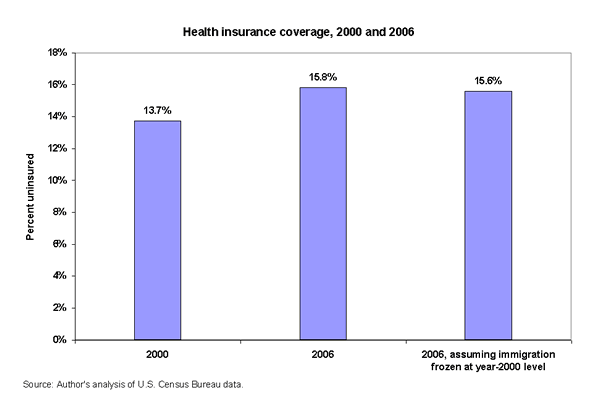See Snapshots archive.
Snapshot for October 31, 2007.
Immigration not driving the erosion of health insurance
by Heidi Shierholz
The number of people in the United States without any type of health insurance continued its steady climb in 2006, to 47 million uninsured. The share of the population without health coverage has grown over 2 percentage points since 2000, from 13.7% in 2000 to 15.8% in 2006 (See Chart).

Some analysts have argued that this increase is driven by the fact that there are more immigrants living in the United States, and that immigrants are less likely than native-born people to have health insurance. While both of these facts are true (the share of the foreign-born population increased 1.2 percentage points from 2000 to 2006, and the share of immigrants without health insurance was 20 percentage points higher over this period than that of native-born people), these facts are not driving the overall decline in coverage.
For one thing, the percent uninsured increased over this period at roughly the same rate among the native-born (up 1.8 percentage points) and immigrants (up 2.0 percentage points). Furthermore, if the percent of immigrants in the population had remained unchanged from 2000, the overall uninsured share still would have increased by 1.9 percentage points. Given that the actual increase was 2.1 percentage points, this means that only 0.2 percentage points (or less than one-tenth) of the increase of the uninsured can be attributed to immigration. The conclusion is clear: immigration is not the driving force behind the continued erosion of health insurance in this country.
